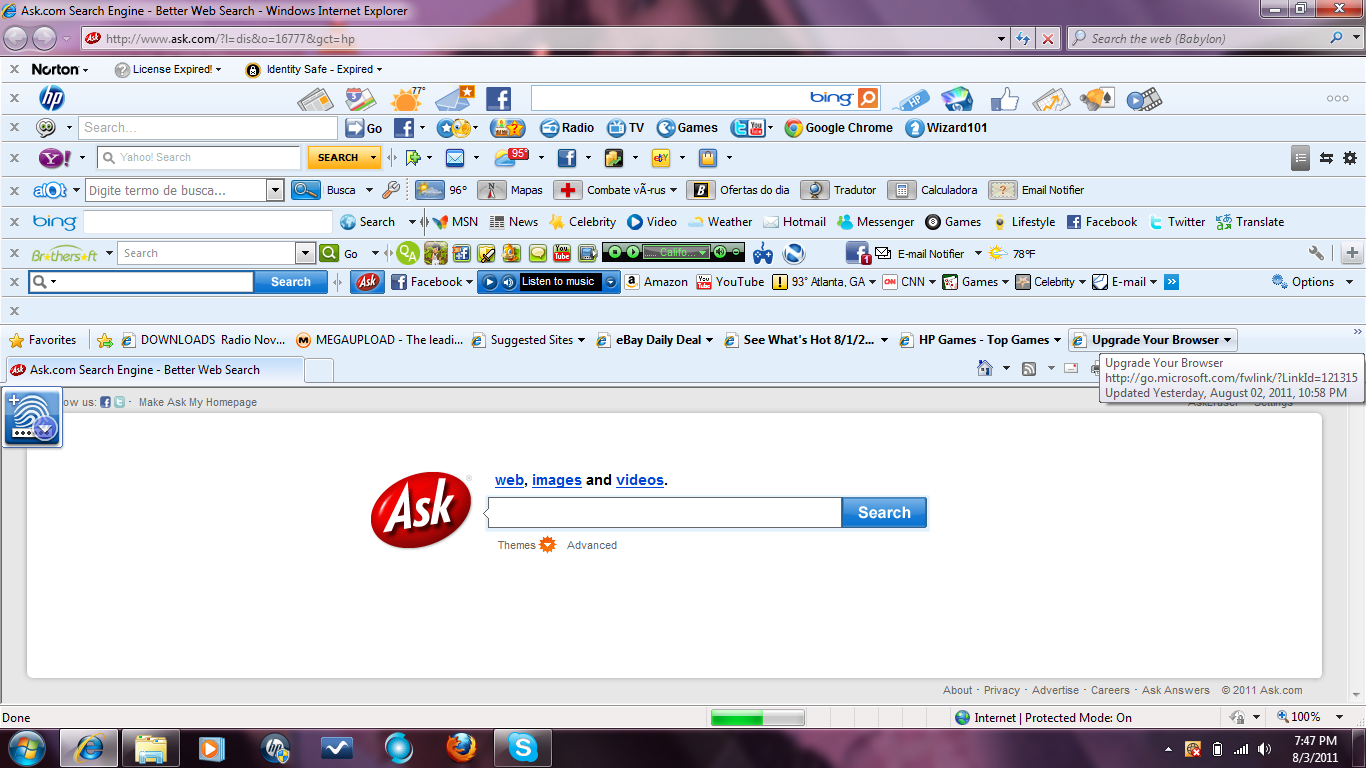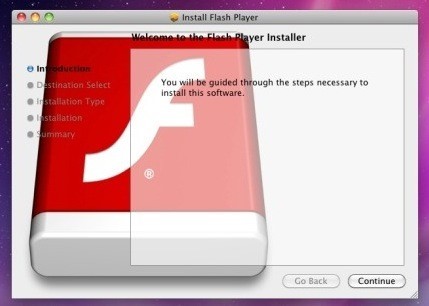
by Blog Staff | Oct 12, 2015 | Home + Mobile
It’s National Cybersecurity Awareness Month in the US and Stay Smart Online Week in Australia, so you might say that security is on the minds of more people around this time. So as we start taking the lessons in and changing some of our habits, there is another area that could use more attention; our personal data.
With a large variety of social networks available around the world, the opportunities to share are endless, but with that, so is the opportunity for information gathering by malicious parties as well as chances that private information could be revealed in a breach. One way to avoid this from occurring is by being careful with your information and be aware with what information you give out. An example of this can be seen from the recent Ashley Madison scandal where people not only posted their real names and personal details, but also linked their work email in some cases, embarrassing not just themselves but the organisations they work for. Also the less information you give out (like emails and phone numbers) the less likely you’re hit with spam.
And then there comes the personal data that you carry with you, be it from home to the office or on your next big vacation. This data could be stolen and compromised for malicious intent such as stolen identities, financial fraud, or even blackmail.
It’s always handy to encrypt your drive, whether you travel with your device or not. It is vital to encrypt a drive if it has sensitive data on it relating to you or the organisation you work for. There has been quite a few cases in this country where unencrypted devices from organisations go missing with customer data on it, then the Data Protection Commissioner will get involved and likely impose penalties on the organisation. An example of this: http://www.independent.ie/irish-news/three-eircom-laptops-containing-customers-data-including-bank-details-stolen-26820140.html. As well as encrypting your drive, don’t keep sensitive data (passwords, security questions, info you don’t want other people to see, etc.) in unencrypted text files lying around your system. If anyone gets access to the computer these files will be compromised.
In this day and age it can never be too much effort to keep personal data personal, and with a few steps, you can help minimize the risk to that information. While some might take time to get used to, a healthy habit of being aware will only help in the long run.

by Blog Staff | Oct 9, 2015 | Industry Intel, Threat Lab
In a letter to customers sent today, Dow Jones & Co has revealed that its services were breached, possibly exposing the credit and debit card information of customers. Reportedly only impacting “fewer than 3,500 individuals,” the information provided shows that the unauthorized accesses took place between August 2012 and July 2015.
“In today’s world – where literally anyone connected to the Internet is vulnerable – it’s no longer just a question of spending, it’s a question of processes and skills. Following the Dow Jones breach, I’m heartened that the CEO has publically said that no company is immune to cyberattacks. Solely recognizing that all organizations need comprehensive security solutions is the first step to reducing the onslaught of breaches we’ve witnessed over the last few years,” said Grayson Milbourne, Security Intelligence Director of Webroot.
“As large company breaches have revealed, security isn’t always a question of budget but also a question of skills and background checks. The name of the game is to find out what is going on in an environment and reduce the risk. Overall, there is a clear trend of attacks that aim to compromise companies who store vast amounts of user data. These businesses need to prepare for continued attacks by updating their security policies and systems to be on high alert.”
While Dow Jones & Co is reporting the information has been possibly compromised, they are also reporting that no evidence is pointing toward the information actually being used in authorized manners.

by Connor Madsen | Oct 9, 2015 | Home + Mobile
When it comes to protecting your personal information in our ever-expanding cyber world, there are many ways to defend yourself. Since the vast majority of attacks originate on the Internet, it is smart to use multiple layers of security to ensure your computer (and the information it contains), stays secure.
One of the most common forms of protection is a Firewall, which is designed to block unauthorized access to the system, while still allowing communication outbound. Microsoft provides a firewall within the Windows OS as a standard security setting.
Along with having a Firewall, it is strongly recommended to have an Antivirus software running as well. This layer provides a defense against known malware and can use behavioural data to determine if a program is acting suspiciously. Of course I recommend Webroot SecureAnywhere, but the general rule is no matter who you have protecting your machine, to keep it updated at all times.
In the case of a successful breach or even just a computer malfunction, having some form of backup (online or external), can be extremely valuable. With an external backup solution, it is important to update it regularly, to ensure any new data or changes are saved. Also ensuring that this backup solution is not constantly connected to your PC helps if any infection does get through, keeping that backup protected. Online backup services usually allow backups to be created at a pre-determined time/day, automatically.
Finally, having the latest version of your preferred Internet browser along with a good Ad-blocking program will aid in keeping your web-browsing experience safe and more enjoyable. With the latest version, it will have many updates to the current security risks, coupled with usability and feature changes.
Each of these solutions has their own strong and weak points, but combined together they cover most of the areas you will have access to while using a computer. With multiple layers of security, you can make your computing experience safer and have the reassurance that your personal information is much more difficult to compromise.

by Blog Staff | Oct 8, 2015 | Home + Mobile
Cybercrime. Remember the days when cybercrime was a word only super nerds and fans of the hilariously bad 1995 film Hackers used to say? No longer. You can hardly go a week without reading about the latest data breach, exploit, or hacktivist plot.
Back in the day, cybercriminals used to primarily fall under the lone wolf category, writing scripts and hunting for exploits without sharing their techniques, because if they did, it might cut into their profits. But, in the last few years, cybercrime has shifted from strings of unrelated, uncoordinated attacks—the digital equivalent of a bank robbery or a mugging—to highly calculated, business-like maneuvers determined to maximize revenue and get the hackers’ branding out there.
It isn’t just businesses that are suffering from these well-planned attacks, either. Even people with no affiliation to the companies suffering from data breaches are having their identities and payment information stolen.

The FTC has seen growth in the last several years in reported cases of identity theft and payments fraud among consumers, with the costs also rising each year. With cybercriminals banding together to exploit the masses, it’s time consumers did the same.
Webroot® AntiVirus for PC Gamers takes a new approach to securing your gaming rig. By utilizing a Smarter Cybersecurity® approach to protecting devices, each computer defended by Webroot helps secure the rest of the Webroot network—our own, modern-day digital Family.
In Victorian London, the working-class had to band together to fight against exploitation and crimes perpetrated against the masses. In Assassin’s Creed Syndicate, you will play as twin Assassins Jacob and Evie Frye and fight for their cause. It’s time you did the same today and secured your gaming experiences with the lightest, fastest security in history!
Try Webroot AntiVirus for PC Gamers for FREE today and enter for a chance to win an Origin® EON15-S gaming laptop! Take down enemies of The Family in high-def style on this sleek, performance-driven laptop.
Get rewarded for doing what you already love to do. Sign up at www.assassinscreed.com/rewards to earn credits towards bonus in-game content, enter sweepstakes, and even win an Origin® EON15-S gaming laptop! Check out protect-the-future.com today and earn even more bonus Credits!

by Dan Para | Oct 7, 2015 | Industry Intel, Threat Lab
Has your home page changed? Are you getting pop-up ads that are “Provided by” some company you’ve never heard of? Are your search results coming from a different search engine? Welcome to the world of Potentially Unwanted Applications (PUAs.) While they can be annoying, PUAs are easily avoided.
The easiest way to avoid PUAs is to only install programs from their official download sites. Third-party download sites continue to be one of the main sources for PUAs. If you search for software downloads, chances are you will end up on a third-party site rather than an official download page and end up inadvertently installing PUAs.
When installing software, always pay attention to the install process – don’t just click “next” until the install is complete. Most installers allow you to opt-out of installing optional software, but they don’t always make it easy. Pay attention to any available install options, and always choose a custom install when possible. Watch for “skip” or “decline” buttons that will allow you to not install bundled applications. Look for check boxes that ask you if you want to install additional applications of change your home page or search settings. If you follow these suggestions it will help you to avoid installing PUAs.

by Connor Madsen | Oct 5, 2015 | Industry Intel, Threat Lab
Phishing attacks have been a prevalent, and often quite successful method of obtaining sensitive data from unsuspecting victims for quite a few years now. These attacks are extremely common through email and usually only require the user to click on a link contained within, and enter the information requested. Due to the simplicity of obtaining potentially valuable data from users, many companies have been instituting security training for these types of attacks by using phishing tests to determine their employees’ ability to discern a real email from a possible phish.
With the latest breach coming from the United States’ Office of Personnel Management, the question remains of what could have been done to prevent such a high-security organization from making a simple mistake that could be catastrophic? The answer seems to be increasing the amount of security training that is taking place within these organizations, in regards to phishing attacks and basic online security.
Unfortunately, many users continue to fail these types of tests, while still holding high-level security clearance. This is likely due to the lack of reprisal for the user, aside from more security training sessions, which allows the poor behaviour to carry on. Paul Beckman, CISO for the Department of Homeland Security, has a different idea about consequences for these individuals, who are often senior managers or other C-level employees. He states, “Someone who fails every single phishing campaign in the world should not be holding a TS SCI with the federal government”, and suggests that these employees should have their security clearance removed until such time that they can prove to be responsible with extremely sensitive information.
Beckman said he hopes to move forward with the discussion of cracking down on repeat offenders, but it will all take more time and getting more CISOs on board. Meanwhile, these types of attacks are becoming more personal and thus, more difficult to prevent against.
With other companies able to learn lessons based off the circumstances surround the OPM hack though, we hope too see a continued shift towards education and understanding from the largest corporations down to the standard internet user. Maintaining awareness and understanding of the threats on the internet, especially effective ones such as phishing, is the first step in moving towards safer browsing habits.

by Blog Staff | Oct 2, 2015 | Industry Intel, Threat Lab
The subject that fan boys of each side love to argue about. Mac malware. The fact is that malware for Mac is real and it continues to grow as a problem. In 2012 Apple removed the statements “It doesn’t get PC viruses” and “A Mac isn’t susceptible to the thousands of viruses plaguing Windows-based computers.” I would like to shed light on the malware from beginning to now in hopes that it will bring an understanding of why security is needed on all operating systems, including your Mac.
 1982 – The first threat that occurred was the Elk Cloner (this however did not actually affect the Mac) which would cause the Apple II to boot up with a poem:
1982 – The first threat that occurred was the Elk Cloner (this however did not actually affect the Mac) which would cause the Apple II to boot up with a poem:
Elk Cloner: The program with a personality
It will get on all your disks
It will infiltrate your chips
Yes, it’s Cloner!
It will stick to you like glue
It will modify RAM too
Send in the Cloner!
1987-2003
There were a few different malware families that came out but being as they are using an operating system that is not really used I won’t go into great detail. In 1987 nVIR virus began to infect Macintosh computers. In 1988 HyperCard viruses started to gain traction. HyperCard was software created by Apple to execute scripts immediately on opening. MDef was discovered in 1990. MDef infected application and system files on the Mac. In 1995 Microsoft released a virus that would infect both PC and Mac users via Microsoft Word called Concept. In 1996 Laroux, the first Excel macro virus was found but didn’t actually do anything to Macs until Excel ’98 was released. In 1998 Both AutoStart 9805 and Sevendust were discovered.
2004-Present – This brings us into the modern operating system we all know and love OS X. Also the time frame where threats are created that can still affect systems in use today.
2004 – Renepo was found. It had the ability to disable a system firewall, and it would try to copy itself to /System/Library/StartupItems.
 2004– Amphimix a program which is also a MP3 file. When launched it displays a dialog box which reads “Yep, this is an application. (So what is your iTunes playing now?)” It then loads itself into iTunes as an MP3 file called “Wild Laugh”, playing four seconds laughter.
2004– Amphimix a program which is also a MP3 file. When launched it displays a dialog box which reads “Yep, this is an application. (So what is your iTunes playing now?)” It then loads itself into iTunes as an MP3 file called “Wild Laugh”, playing four seconds laughter.
 2006 – Leap is widely considered to be the original Mac Trojan. Leap used iChat to spread itself; forwarding itself as a latestpics.tgz file to the contacts on the machine. Inside the Gzipped Tar File (.tgz) was an executable file masked as a JPEG. When executed, it infected all Cocoa applications.
2006 – Leap is widely considered to be the original Mac Trojan. Leap used iChat to spread itself; forwarding itself as a latestpics.tgz file to the contacts on the machine. Inside the Gzipped Tar File (.tgz) was an executable file masked as a JPEG. When executed, it infected all Cocoa applications.
2006 – Inqtana was the second worm for Mac OSX. The worm propagated through a vulnerability in unpatched OSX systems.
2008 was a big year for Mac malware… Apple published an advisory to use antivirus software. They removed the statement from its website after being up for about two weeks.
2008 – BadBunny is a multi-platform worm written in several scripting languages and distributed as an OpenOffice document containing a macro. It spreads itself by dropping script files that affect the behavior of popular IRC (Internet Relay Chat) programs, causing it to send the worm to other users.
2008 – RSPlug is a Trojan that changed DNS to send users to malicious servers. It originally spread as a video codec that was downloaded from various porn websites.
2008 – AppleScript.THT tries to disable security software, steal user’s passwords, turn on file sharing, take screenshots of the desktop, and take a photo of the user via the built-in camera. The malware exploits a vulnerability with the Apple Remote Desktop Agent, which allows it to run as root.
 2008 – MacSweeper, Mac’s first ‘rogue’ application (a fake antivirus misleading users by reporting infections that doesn’t exists). When the infected user tried to remove the “infections”, MacSweeper asked to provide credit card details and pay $39.99 for a “lifetime subscription serial key.”
2008 – MacSweeper, Mac’s first ‘rogue’ application (a fake antivirus misleading users by reporting infections that doesn’t exists). When the infected user tried to remove the “infections”, MacSweeper asked to provide credit card details and pay $39.99 for a “lifetime subscription serial key.”
I won’t lie, before I got into threat research, I ended up with this on my Mac…
2008 – Hovdy tried to install itself to /Library/Caches. It disabled syslog/system updates, stole password hashes, open ports in the firewall, disabled security software, installed LogKext keylogger and started web server, VNC, and SSH. It also tried to get root access by way of ARDAgent vulnerability.
2009 – Iservice was discovered in a pirated version of iWork ’09. It copied itself to /usr/bin/iWorkServices and tried to execute a HTTP request. Updated variants were later found in a pirated versions of many high use programs.
August 28, 2009 – Apple released an anti-malware tool called XProtect,at release it could protect a Mac against only two threats (RSPlug and Iservice).
2010 – HEllRTS (aka HellRaiser) is a Trojan that allows control of a computer by a remote user. The remote user has the ability to transfer files, pop up chat messages, display pictures, and even restart or shut down the infected machine.
2010 – Boonana, a Trojan that spread via social media and email disguised as a video. It runs as a Java applet, which downloads its installer to the machine. After installed it starts running in the background and communicating with a variety of servers such as command and control servers.
2011 – MacDefender, another rogue like MacSweeper that installs itself into the /Application folder and wants you to pay them for the “infections” to be removed from your mac.
 2011/2012 – Flashback was disguised as a Flash player download and targets a Java vulnerability on Mac OS X. The system is infected after the user is redirected to a compromised bogus site, where JavaScript code causes an applet containing an exploit to load. The Flashback malware was the largest attack to date, hitting more than 600,000 Mac computers.
2011/2012 – Flashback was disguised as a Flash player download and targets a Java vulnerability on Mac OS X. The system is infected after the user is redirected to a compromised bogus site, where JavaScript code causes an applet containing an exploit to load. The Flashback malware was the largest attack to date, hitting more than 600,000 Mac computers.
2013 – Lamadai, a backdoor Trojan, targeted NGOs (Non-Government Organizations) and exploited a Java vulnerability to drop further malware code.
2013 – Hackback spied on victims and was designed to take a list of certain file types, find all files matching those types, compress them into a zip located in /tmp/ and upload them to a remote server.
2014 – LaoShu went viral via spam emails posing as a notification from FedEx. It contacts a remote server sending system information, files, and screenshots. It is important to note that it is signed with a valid Apple developer ID certificate.
2014 – CoinThief is designed to steal Bitcoins from infected machines, and is disguised as legitimate apps. The source code was on Github for a while under an app named StealthBit.

It’s worth mentioning that these have been the main threats seen on the Mac and not all of them. There are many smaller variants and proof of concepts that are not listed. Also, that I didn’t include any adware variants such as Genieo or VSearch on here, but I did write about in my last blog. Even after seeing all of these there will still be those that refuse to believe that their mac is vulnerable to attack, but trust me it will only get worse from here. Apple is increasing their market share and with that comes an opportunity for malware writers to make more money.

by Dan Para | Sep 30, 2015 | Industry Intel, Threat Lab
Whenever I think of security awareness, there is one question that haunts me: How do we educate the not-so-technically inclined about security? It seems like a simple enough question, we know the basic tips and tricks, it’s second nature to many of us. Keeping Windows fully patched and up to date pretty much takes care of itself with the proper settings in Windows Update. Many other applications check for updates regularly by default. Running antivirus software should be a no-brainer and if you run a cloud-based AV solution like Webroot SecureAnywhere you don’t even need to worry about updates.
Then you try to explain how to identify a suspicious email to that friend or family member that always comes to you for computer support. You came prepared with sample emails complete with circles and arrows and highlighted text. You explain how to check email headers, hover over links to check where they actually go, and look for obvious spelling and grammatical errors. To the non-techie this can seem like a bunch of techno-babble that they will not remember.
The technical approach is simply not going to work on some people. Yo can suggest treating any email that they were not expecting to receive, is from an unknown sender, and contains a link or an attachment as suspicious. This can work, but has it’s own issues. People order products over the internet all the time. Order and shipment confirmation emails are something people expect, so when someone receives a fake email claiming to be from a shipping company it can be quite effective. These emails may be obviously suspicious to you, but you said to be suspicious of emails that they were not expecting, remember? It tends to just get more complicated from there. We want to educate and help develop healthy suspicions, not distrust and paranoia.
So how do we explain how to identify a suspicious email in simple terms that even the less technical people can understand? This is a question that we need to continue to ask ourselves, and we each need to do our part in educating others on security issues.
As a note, tomorrow begins National Cyber Security Awareness Month and with that, we will be posting regular security tips to keep you and your family safe while online.

by David Kennerley | Sep 17, 2015 | Industry Intel, Threat Lab
Over a year has now passed since we were first alerted to a flaw in the OpenSSL cryptography library, widely used in the implementation of Transport Layer Security (TLS) protocol. The bug CVE-2014-0160, was quickly dubbed “Heartbleed” (http://heartbleed.com/) after a missing bounds check in the TLS heartbeat extension. Despite the passing of time and the high profile nature of the flaw, IoT crawler Shodan has recently discovered the vulnerability still exists on over 200,000 internet connected devices.
Shodan (http://www.shodanhq.com/) launched in 2009, is a search tool that seeks out internet-of-things (IoT) and other internet connected devices collecting the information returned by these devices to build up a picture of what services are being offered. The data can then displayed in a variety ways including by geo-region breakdown. This is great tool for IT and security teams and unfortunately also for the bad guys.
Many people will deem 200,000 vulnerable devices on the internet as unacceptable, and in many ways it is. At the same time I think it is important for us all to understand why this happens and why there is currently no easy fix. I believe we will see vulnerabilities like Heartbleed in the wild for many years to come. Whereas I do believe there is a certain level of ignorance to the threat, I also believe there are many other factors.
There are users who aware their devices are vulnerable, not realizing their device uses the buggy version of OpenSSL, or even uses SSL for communication. There will be others that haven’t heard of Heartbleed and many not understanding the tech details, the fix, or the ramifications. Sometimes putting two and two together is little more difficult that we’d like to think. Hey, we are asking users to understand and fix their devices, when at present they still haven’t changed the device’s default admin password – even worst, they’ve not realized their device is even connected to the internet.
Ignorance and even arrogance with regards to the lack of patching has been observed. Not patching a device when possible, believing it is unlikely to be exploited is simply not acceptable. We need to move away from setup and configure once, then leave alone. Users need to research, revisit and understand the devices on the network and especially those connected to the internet.
Search engines like Shodan mean that susceptible devices are less likely to go under the radar – it also highlights the appetite the business and personal sector have for security. Once the configuring and setup of these devices required a certain skill level. That’s all changed now, especially with WPS and other technologies, many devices are completely ‘plug and play’. The complexities of such systems are hidden from the user – even if patches are available for said devices, I very much doubt many users would know how to install them.
There are also many manufacturers that focus on the delivering of ‘cheap’ affordable technology, OEM and unbranded to an untrained eye in many cases. These cheaper offerings normally come at a price – limited aftercare. Put simply you’ll be lucky to ever see manufactures release new firmware and software updates after purchasing and that’s if the vendor still exists.
The mobile phone industry has used a similar business model for years, after a while updates stop, if they even started – meaning customers will need to go out and purchase the a new handset/hardware to have the latest and most secure software. What we are left with is millions of vulnerable internet connected devices. Most devices, especially legacy devices, the ones most likely to be at risk have no OTA (over the air) update capabilities, many do not even include a manual update feature – many are not even capable of running the newer firmware and software.
There’s a lot of bad news, but it doesn’t mean a certain level of protection cannot be offered – something the Shodan results are unable to factor in. Internet connected devices need continuous monitoring to detect common attacks, the use of automated vulnerability scanning solutions, the use of tools like Shodan. There are many possible ways to mitigate risk, like the separating of networks. Heartbleed has been a big wake up call, the number of probable vulnerable devices, the extra media attention along with the slick branding propelled this security risk from the geeks and IT and security professionals all the way to the boardroom. It’s important not to be fooled in to thinking this is only an IoT issue, a proportion of the devices highlighted belong to the more traditional internet infrastructure hardware group. That said, the mass adoption of IoT will only make future vulnerabilities more difficult to correct.
I don’t see these current findings as a ‘we haven’t patched Heartbleed’ issue, it’s another example of what happens without regulation and standardization, without user education and best practices, coupled with the ‘security as an afterthought’ mentality.

by Tyler Moffitt | Sep 10, 2015 | Industry Intel, Threat Lab
Only a month has gone by since the last RaaS (Ransomware as a Service) came to light. It looks this new business model that was first introduced by TOX a few months ago is spreading fairly rapidly. The idea is that now ALL malware authors of ranging skill can now create encrypting ransomware on a easy to use platform. This latest variant called ORX Locker is no different.

Simply enter in the desired info (price, identifiers, time limit, ect.) and the site will generate a new binary tailored to your specifications. The hackers are still responsible for distributing the malware, but renting time on many operational botnets and email phishing campaigns is also fairly easy to do in the underground darknet marketplace.
Once a victim is infected there is no GUI popup once all files are encrypted. It just changes the extension of all encrypted files to “.LOCKED” so you have a nice surprise when you try open one of your compromised files. Instructions on how to get your files back are left on your desktop as locally stored web page.

Special instructions are given to show a novice user how to connect to onion links and pay the ransom. Once you successfully connect to the darknet then the payment page is presented.

The instructions are clear on what you need to do to get your files back. Bitcoin is the criminal industry standard now and you’ll have a hard time paying for any ransom without it. While some ransoms will also accept the legacy money mules like ukash and moneypak, that is quickly dying out in favor of a better fee structure bitcoin launderers offer. Once you’ve paid you just download their tools and it will unlock all of your files using the AES 256 key that was generating during encryption.
This variant does not delete the VSS so as long as you have system restore enabled you can get your files back without paying the ransom. Just download a shadow copy tool like shadow explorer and you can restore files from a previous restore point. While the variant we analyzed showed no advanced techniques and is relatively simple in design, it remains a threat to unprotected systems and should be taken seriously. Improvement tweaks in the future are always possible and may “patch” the back doors it left open to your files.
- MD5 Analyzed:89E1EFDC766E9C7D41305566993BA800
- Additional MD5: D6ED4D4E8B1A95A224EBDD54529B3751
- Additional MD5: 1914724AEEA3CA954322053DD883B14A
Webroot will catch this specific variant in real time before any encryption takes place. We’re always on the lookout for more, but just in case of new zero day variants, remember that with encrypting ransomware the best protection is going to be a good backup solution. This can be either through the cloud or offline external storage. Keeping it up to date is key so as not to lose productivity. Webroot has backup features built into our consumer product that allow you to have directories constantly synced to the cloud. If you were to get infected by a zero day variant of encrypting ransomware you can just restore your files back as we save a snapshot history for each of your files up to ten previous copies. Please see our community post on best practices for securing your environment against encrypting ransomware.














 1982 – The first threat that occurred was the Elk Cloner (this however did not actually affect the Mac) which would cause the Apple II to boot up with a poem:
1982 – The first threat that occurred was the Elk Cloner (this however did not actually affect the Mac) which would cause the Apple II to boot up with a poem: 2004– Amphimix a program which is also a MP3 file. When launched it displays a dialog box which reads “Yep, this is an application. (So what is your iTunes playing now?)” It then loads itself into iTunes as an MP3 file called “Wild Laugh”, playing four seconds laughter.
2004– Amphimix a program which is also a MP3 file. When launched it displays a dialog box which reads “Yep, this is an application. (So what is your iTunes playing now?)” It then loads itself into iTunes as an MP3 file called “Wild Laugh”, playing four seconds laughter. 2006 – Leap is widely considered to be the original Mac Trojan. Leap used iChat to spread itself; forwarding itself as a latestpics.tgz file to the contacts on the machine. Inside the Gzipped Tar File (.tgz) was an executable file masked as a JPEG. When executed, it infected all Cocoa applications.
2006 – Leap is widely considered to be the original Mac Trojan. Leap used iChat to spread itself; forwarding itself as a latestpics.tgz file to the contacts on the machine. Inside the Gzipped Tar File (.tgz) was an executable file masked as a JPEG. When executed, it infected all Cocoa applications. 2008 – MacSweeper, Mac’s first ‘rogue’ application (a fake antivirus misleading users by reporting infections that doesn’t exists). When the infected user tried to remove the “infections”, MacSweeper asked to provide credit card details and pay $39.99 for a “lifetime subscription serial key.”
2008 – MacSweeper, Mac’s first ‘rogue’ application (a fake antivirus misleading users by reporting infections that doesn’t exists). When the infected user tried to remove the “infections”, MacSweeper asked to provide credit card details and pay $39.99 for a “lifetime subscription serial key.” 2011/2012 – Flashback was disguised as a Flash player download and targets a Java vulnerability on Mac OS X. The system is infected after the user is redirected to a compromised bogus site, where JavaScript code causes an applet containing an exploit to load. The Flashback malware was the largest attack to date, hitting more than 600,000 Mac computers.
2011/2012 – Flashback was disguised as a Flash player download and targets a Java vulnerability on Mac OS X. The system is infected after the user is redirected to a compromised bogus site, where JavaScript code causes an applet containing an exploit to load. The Flashback malware was the largest attack to date, hitting more than 600,000 Mac computers.





